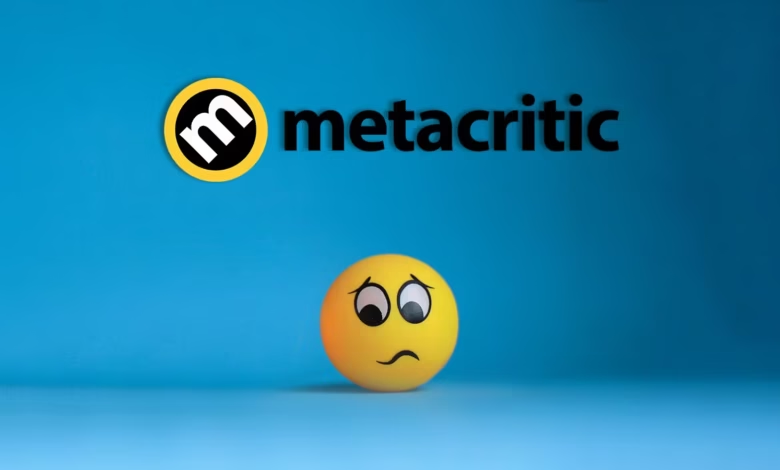Metacritic

In today’s digital age, where consumers rely heavily on online reviews before making decisions about entertainment, one platform stands out for its unique ability to compile and summarize expert opinions into a single, concise score—Metacritic. Whether you’re choosing a movie for the weekend, a video game to play, a TV series to binge, or an album to listen to, Metacritic offers a snapshot of critical reception that can help guide your choices.
This article will dive deep into what Metacritic is, how it works, its scoring system, its impact on various industries, criticisms it has faced, and alternatives that consumers might consider. By the end, you’ll have a comprehensive understanding of why Metacritic remains such a powerful tool in entertainment culture.
What Is Metacritic?
Metacritic is a review aggregation website that collects reviews of movies, TV shows, music albums, and video games from various professional sources and assigns a weighted average score known as a Metascore. This score, usually on a scale from 0 to 100, represents the overall consensus of critics about a piece of media.
Founded in 1999, the platform has grown to become a cornerstone in media criticism. It gives users a simplified view of critical consensus without needing to read multiple individual reviews.
History and Evolution of Metacritic
Metacritic was founded in 1999 by Marc Doyle, Julie Doyle Roberts, and Jason Dietz. The idea was to simplify the review process for consumers by converting qualitative reviews into a numerical score.
Timeline of Key Events:
| Year | Event |
|---|---|
| 1999 | Metacritic founded |
| 2005 | Acquired by CNET Networks |
| 2008 | Became part of CBS Interactive |
| 2020 | Merged under Red Ventures after acquisition from ViacomCBS |
From a modest beginning, the site has grown exponentially and is now widely cited in press releases, promotional materials, and media analyses.
How Metacritic Works
Metacritic aggregates reviews from verified publications and professional critics. These reviews are translated into a 0–100 scale and averaged to produce the Metascore.
Steps Involved:
-
Collecting Reviews – Pulls from reputable critics and media outlets.
-
Converting Scores – Converts letter grades, stars, or qualitative reviews into numerical scores.
-
Weighting Scores – Not all publications are equal. More influential or consistent critics may have their reviews weighed more heavily.
-
Calculating Average – Produces a weighted average score.
-
Color-Coding – Uses colors to quickly indicate quality:
-
Green (75–100): Universal acclaim
-
Yellow (50–74): Mixed or average
-
Red (0–49): Generally unfavorable
-
The Metascore System Explained
Metacritic’s scoring system is both its strength and a point of contention.
Color-Coding Scheme:
| Score Range | Color | Interpretation |
|---|---|---|
| 90–100 | Green | Must-watch / Must-play |
| 75–89 | Green | Critically acclaimed |
| 50–74 | Yellow | Mixed or average reviews |
| 0–49 | Red | Poor reception |
Weighting Mechanism:
Some outlets are given more influence based on their reputation and the accuracy of their past reviews. This means the Metascore is not a simple average, but a weighted one.
Categories on Metacritic
Metacritic covers a wide range of entertainment categories:

1. Movies
Metacritic’s movie section is one of its most popular. Films are rated based on early reviews from critics like RogerEbert.com, Variety, The Hollywood Reporter, and more.
2. TV Shows
TV shows are evaluated season-by-season, and scores can vary drastically over time.
3. Video Games
This is a hugely influential section—so much so that game studios often cite Metascores in marketing. Reviewers include IGN, GameSpot, Polygon, etc.
4. Music Albums
Music scores are less frequently referenced in the mainstream but still valuable, especially in indie and critical music circles.
Impact of Metacritic Scores
On Consumer Behavior
A high Metascore can drive sales and viewership. Many users rely heavily on Metacritic before making purchases or watching decisions.
On Industry Performance
-
Film Studios: A good Metascore can boost box office numbers.
-
Game Developers: Some contracts include bonuses if a game hits a certain Metascore.
-
TV Networks: Use scores to evaluate whether to continue or cancel shows.
On Artist Reputation
A consistent history of good scores can enhance a creator’s brand and credibility in the industry.
Criticisms and Controversies
While Metacritic has many fans, it is not without criticism:

1. Lack of Transparency
The exact weighting formula is not public, which raises concerns about fairness.
2. Score Conversion Issues
Not all review systems convert cleanly to a 100-point scale, leading to possible misinterpretation.
3. User Review Bombing
User scores can be manipulated by fans or detractors, especially during controversies.
4. Influence on Creativity
Some argue that the emphasis on scores stifles creativity and encourages creators to “play it safe” to score well.
User Scores vs Critic Scores
Metacritic shows both Critic Scores and User Scores side by side.
Key Differences:
| Feature | Critic Score | User Score |
|---|---|---|
| Source | Professional Critics | Public Users |
| Weighted | Yes | No |
| Review Type | Expert analysis | Personal opinion |
| Vulnerability | Low manipulation | High manipulation (review bombing) |
Examples of Score Discrepancies:
-
The Last of Us Part II received a Critic Score of 93 and a User Score around 5.0 shortly after launch due to fan backlash.
-
Star Wars: The Rise of Skywalker had a Critic Score of 53 but a User Score around 6.0, indicating fan preference over critic analysis.
Metacritic vs Other Platforms
Metacritic is often compared to similar aggregators:
| Platform | Strengths | Weaknesses |
|---|---|---|
| Metacritic | Weighted average, professional focus | Transparency issues |
| Rotten Tomatoes | Easy-to-understand “fresh” percentage | Doesn’t show review intensity |
| IMDb | Massive user base, crowd-driven | No critic consensus |
| OpenCritic | Transparent, game-specific | Less coverage outside gaming |
The Future of Metacritic
Potential Developments:
-
More Transparency: Explaining the weighting system could build more trust.
-
AI-Powered Sentiment Analysis: Could help interpret qualitative reviews better.
-
Improved Moderation: To reduce review bombing and bot-generated ratings.
-
Expanded Categories: Possibly including podcasts, mobile games, or web series.
Challenges Ahead:
-
Maintaining Relevance: As platforms like YouTube and TikTok grow in influence.
-
Combating Bias: As media becomes more politicized, reviews may skew accordingly.
-
User Trust: Continually needs to be earned as skepticism around critic bias grows.
Conclusion
Metacritic has carved out a unique and influential role in the entertainment industry. By distilling critical and user opinions into a single, digestible format, it has made review consumption easier and faster for millions of users worldwide.
However, with great power comes great responsibility. As Metacritic continues to shape consumer habits, its practices—particularly around score weighting, transparency, and user moderation—must evolve to maintain credibility and relevance.
Whether you’re a movie buff, gamer, TV addict, or music aficionado, Metacritic remains a valuable tool—but like any tool, it’s most effective when used thoughtfully and in conjunction with other perspectives.
FAQs
Q: Can users trust Metacritic scores?
A: For critic scores, yes—they are weighted and come from reputable sources. However, user scores should be interpreted with caution due to potential manipulation.
Q: How are critic scores converted to a 100-point scale?
A: Letter grades, stars, and other formats are manually converted using a standardized internal guide. Some loss of nuance is inevitable.
Q: Is Metacritic better than Rotten Tomatoes?
A: Both have their strengths. Rotten Tomatoes shows the percentage of positive reviews, while Metacritic provides an average score based on review intensity.
Q: Can artists or studios manipulate their Metascore?
A: Direct manipulation is difficult, but critics’ relationships with industries can indirectly influence outcomes.





